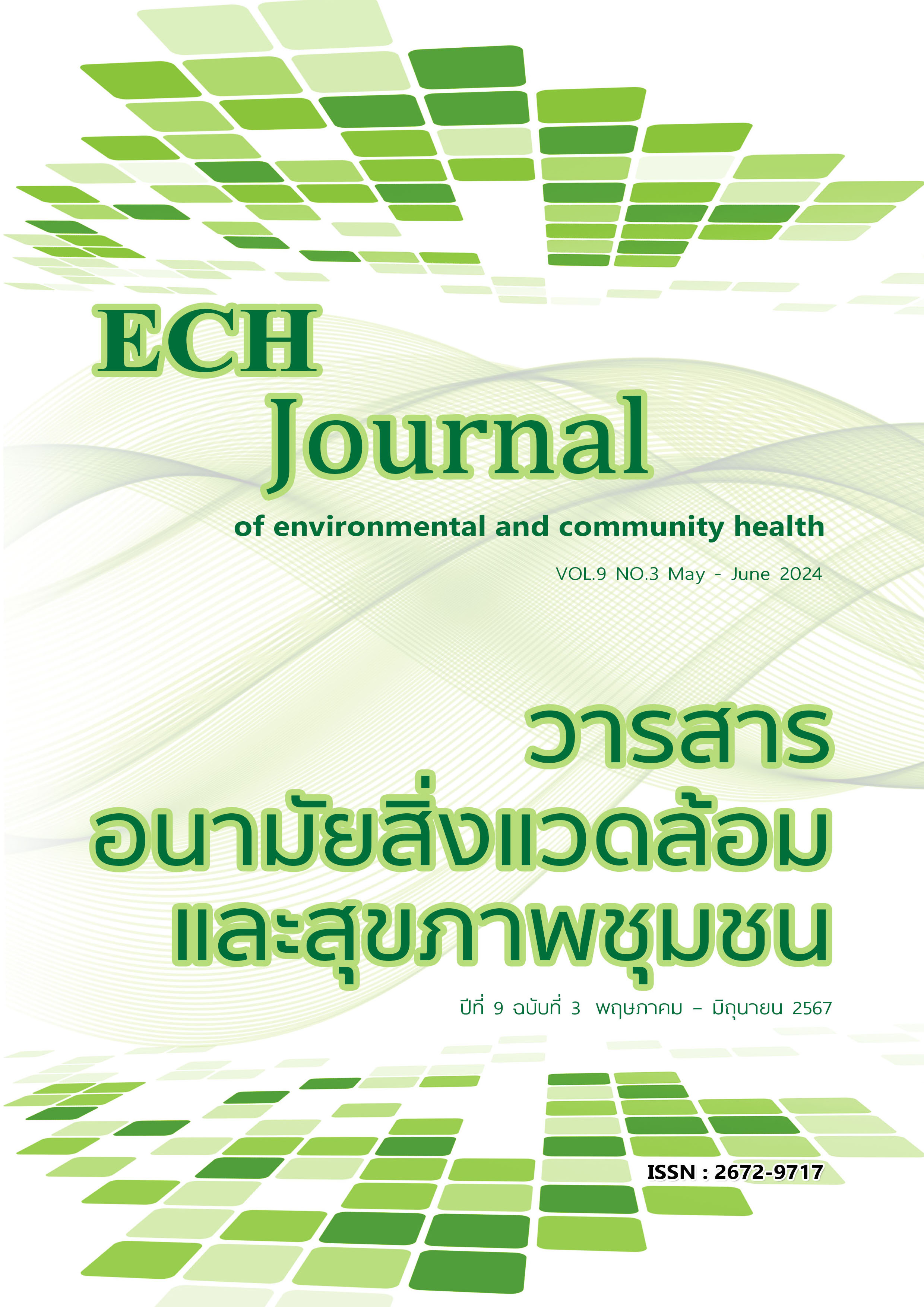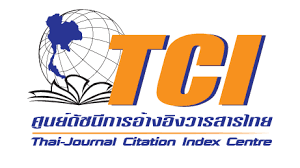Effects of Following the Discharge Planning Process using D-METHOD on Nutritional Self-Care Behavior and Ferritin Levels in Pediatric Patients with Transfusion-Dependent Thalassemia
Keywords:
Discharge planning, D-METHOD, Transfusion-dependent thalassemia, Nutrition, Blood ferritin levelsAbstract
This research is quasi-experimental, which pre-post experimental measurement by selecting only one sample group with four repeated measurements. The research aims to study and compare nutritional self-care behavior scores and blood ferritin levels in pediatric patients with transfusion-dependent thalassemia. The sample group consists of parents and 36 pediatric patients with transfusion-dependent thalassemia who came to receive treatment in the pediatric outpatient department of Nong Khai Hospital from January - April 2024. Discharge Planning Process Using D-METHOD was performed for 12 weeks. Data were collected by evaluating nutritional self-care behavior scores and blood ferritin levels before and after the experiment. Data were analyzed using frequency distribution, percentage, mean, and standard deviation. Blood ferritin levels comparing used Paired t-tests and nutritional self-care behavior scores comparing used Repeated Measures ANOVA.
The results found that comparing the mean scores for each pair of nutritional self-care behavior scores from the 1st assessment (before the experiment) – the 2nd (4th week) and 3rd assessment (8th week) – 4th assessment (week 12) were significantly (F (2.61, 91.20) =31.342, p< .001) Blood ferritin level before the experiment was considerably lower than before the experiment (p<.001).
References
จิตสุดา บัวขาว. (บรรณาธิการ). (2560). แนวทางการดูแลรักษาผู้ป่วยธาลัสซีเมียในเวชปฏิบัติทั่วไป: Guidelines for the care of thalassemia patients in general practice. สำนักวิชาการแพทย์กรมการแพทย์กระทรวงสาธารณสุข. นนทบุรี: สำนักงานกิจการโรงพิมพ์องค์การสงเคราะห์ทหารผ่านศึกในพระบรมราชูปถัมภ์.
วิปร วิประกษิต. (2556). บทความพิเศษ“ธาลัสซีเมีย”: การดูแลรักษาโรคโลหิตจางธาลัสซีเมียแบบบูรณาการ(Comprehensive Management for Thalassemia). วารสารโลหิตวิทยา และเวชศาสตร์บริการโลหิต. 23(4) : 303-320.
ชาคริต เชาวฤทธิ์, สุภาพร ช่างคำและนวินดา วณิชกุลธาดา. (2566). ความชุกและชนิดการกลายพันธุ์ของยีนเบตาธาลัสซีเมียในคู่สามี-ภรรยาที่เสี่ยงต่อโรคเบตาธาลัสซีเมีย: ข้อมูลเขตสุขภาพที่ 10 พ. ศ. 2557-2564: การกลายพันธุ์ของยีนเบตาธาลัสซีเมียในคู่สามี-ภรรยาที่เสี่ยง. วารสารกรมวิทยาศาสตร์การแพทย์. 65(3) : 224-236.
กนกวรรณ ช้างโรจน์, ละเอียด แจ่มจันทร์และจินตนา อาจสันเที๊ยะ. (2563). การพัฒนารูปแบบการดูแลผู้ป่วยเด็กธาลัสซีเมีย โรงพยาบาลโพนพิสัย จังหวัดหนองคาย. 1(3) : 138-150.
เพ็ญลักษณ์ ธรรมแสง. (2566). ผลของโปรแกรมการวางแผนจำหน่ายต่อพฤติกรรมการดูแลตนเองของผู้ป่วยที่เข้ารับการผ่าตัดต้อกระจก โรงพยาบาลน้ำพอง. วารสารอนามัยสิ่งแวดล้อมและสุขภาพชุมชน. 8(2) : 160-168
ปริศนา แผ้วชนะและ วีณา จีระแพทย์ (2554) : ผลของโปรแกรมการวางแผนจำหน่ายต่อพฤติกรรมการจัดการตนเองเพื่อป้องกันอาการหืดกำเริบของเด็กวัยเรียนโรคหอบหืด. https://cuir.car.chula.ac.th/handle/123456789/67631 สืบค้นเมื่อวันที่ 1 มกราคม 2566
กัลยา ถาวงค์ และเมธินี ศรีสวัสดิ์. (2564). ผลของโปรแกรมการปรับเปลี่ยนพฤติกรรมสุขภาพของกลุ่มเสี่ยงโรคความดันโลหิตสูงในโรงพยาบาลส่งเสริมสุขภาพตำบลบ้านนายาง ตำบลนายาง อำเภอสบปราบ จังหวัดลำปาง. วารสารวิชาการสุขภาพภาคเหนือ, 8(2), 103-119.
สำราญ กาศสุวรรณ, ทัศนีย์ บุญอริยเทพและรุ่งกิจ ปินใจ. (2565). ผลของโปรแกรมการปรับเปลี่ยนพฤติกรรมสุขภาพโดยใช้กระบวนการกลุ่มในกลุ่มเสี่ยงโรคความดันโลหิตสูง ตำบลร้องเข็ม อำเภอร้องกวาง จังหวัดแพร่. (PMJCS) Phrae Medical Journal and Clinical Sciences. 30(2) : 27-42.
วารินทร์ วัฒนานนท์เสถียรและ มธุสร ปลาโพธิ์ (2561) ผลของการวางแผนจำหน่ายผู้ป่วยเด็กวัยเรียนโรคธาลัสซีเมีย โดยใช้รูปแบบ D-M-E-T-H-O-D ต่อความรู้เรื่องโรคและความรู้ในการปฏิบัติตัว. วารสารเกื้อการุณย์. 25(2) : 78-92.
ธัญธนาภา สีสถาน1 สุวรา ทองเลิศ. (2567). ผลของการวางแผนจาหน่ายต่อความรู้และพฤติกรรมของผู้ดูแลผู้ป่วยโรคหืดในเด็ก โรงพยาบาลสมเด็จพระยุพราชสว่างแดนดิน. วารสารอนามัยสิ่งแวดล้อมและสุขภาพชุมชน. 9 (2) : 69-78.




